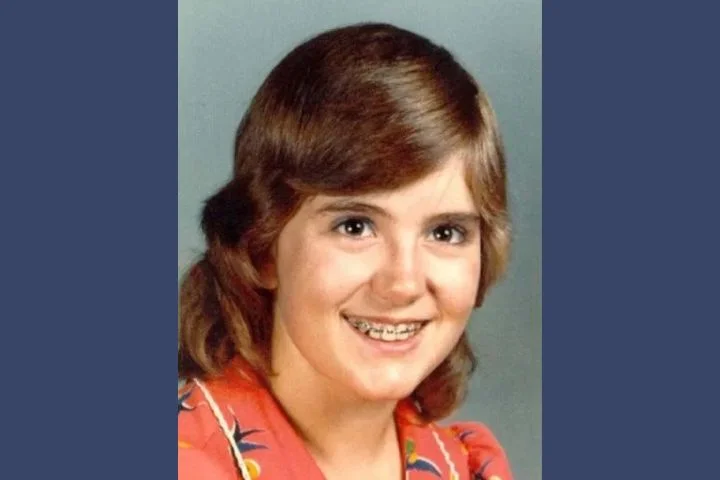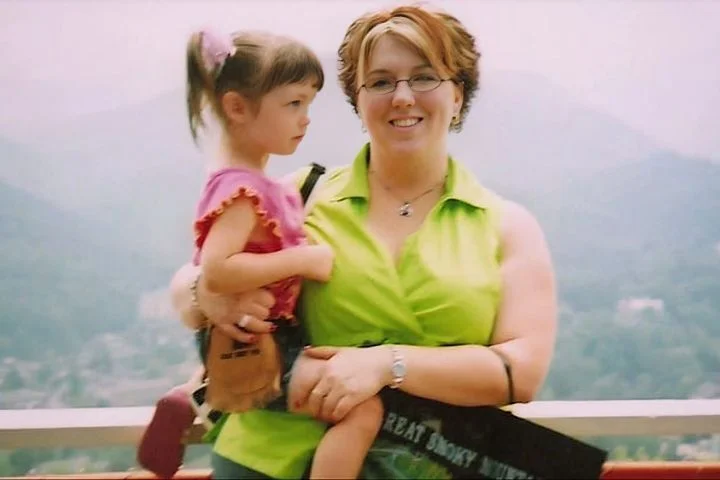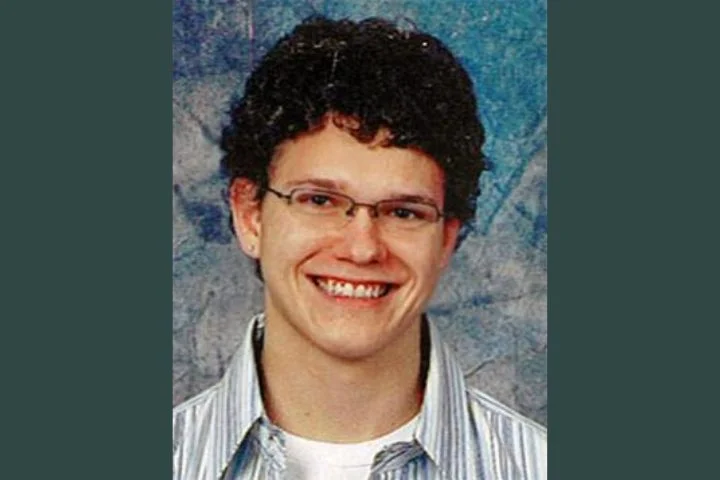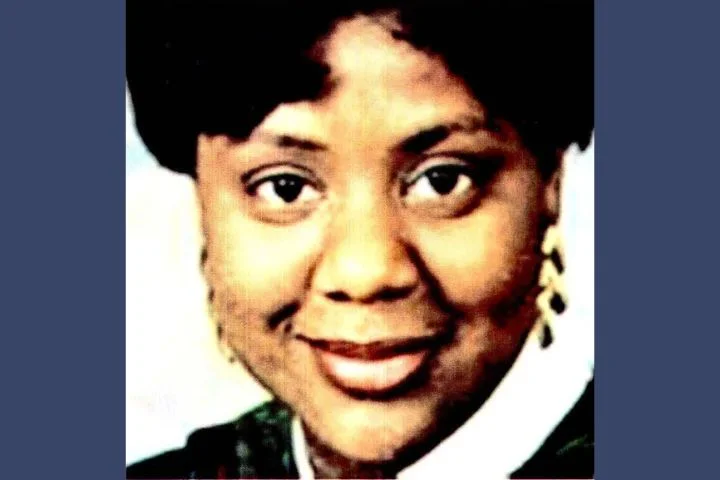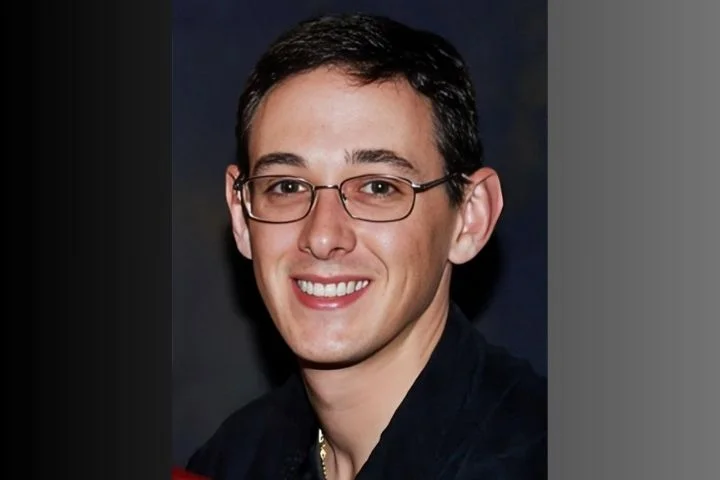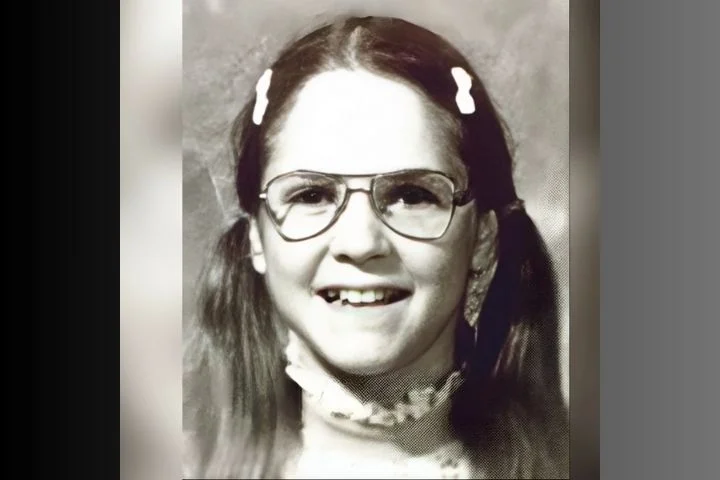When Roland and Joan Eaton woke up on May 17, 1975, they had no idea it would be the last morning they would ever spend with their teenage daughter. The Eatons had been married for more than two decades and lived in an upper-middle class neighborhood in Media, Pennsylvania. They had chosen to live in Media because it provided a safe and comfortable environment for raising their three children. Fifteen years later, the neighborhood was still safe and comfortable, but their days of raising children were starting to come to a close. Two of their kids, 19-year-old Richard and 21-year-old Nancy, were now young adults in college. Their youngest child, Wendy, was only a week away from her 16th birthday. She had just received her learner’s permit that morning, a significant milestone on her path to adulthood.
It was a gorgeous Saturday, with temperatures in the mid-70s. Roland and his wife decided to take advantage of the sunny weather and play a round of golf at a local country club. Wendy was sunbathing on the flat roof outside of her bedroom window, and they asked her if she wanted to come along. She declined, saying she wanted to go to a nearby mall to get a birthday present for her brother. Her parents told her they would see her later in the afternoon and drove off.
Although Wendy was only a week away from being able to drive, she still looked like she was about 12 years old. She was almost finished with her sophomore year at Penncrest High School, but she was still a petite 4’10” and only weighed about 90 pounds. With her two older siblings already in college, it was like she was an only child. She was extremely close with both of her parents and never caused any trouble at home or in school. She hadn’t shown any interest in dating yet, and she spent most of her free time at different church activities. She was a talented musician, playing both guitar and piano, and was scheduled to perform in a church concert later that evening. Her mother described her as being an idealist — her favorite television show was The Waltons.
Wendy laid out in the sun for a little while longer, then climbed back in her bedroom window and got dressed to go shopping. Her parents returned home from their outing around 5:30pm and were surprised that Wendy wasn’t at home. They had expected to find her getting ready for her concert performance that evening. She hadn’t left a note like she normally did if she had a change in plans, so they thought perhaps she had been just been running late with her shopping and had gone directly to the church from there.
Her parents checked her bedroom and didn’t see anything unusual. Her bed wasn’t made, but that was normal for her. She hated making her bed, it was one of those chores that just seemed like a waste of time when she knew she was just going to mess it up again later. Her bathing suit was crumpled on the middle of her bedroom floor, and she had listened to a John Denver record and not put the album back where it belonged, but for the most part her room was neat. Her purse was still in her bedroom, but she didn’t always carry it with her if she was walking somewhere, preferring to just put her money in one of her pockets.
While Joan and Roland weren’t too worried about Wendy, they felt somewhat uneasy. Roland decided to make the mile and a half drive to the church where the concert was being held. He told himself that Wendy would definitely be at the church and he was just being paranoid. He parked outside the church and headed inside, where he found several of Wendy’s friends. They told Roland that they hadn’t seen Wendy and had been wondering where she was. Roland could feel himself starting to panic, but he forced himself to stay composed. He headed back home, praying that Wendy would be there. Unfortunately, she wasn’t.
Joan and Roland began calling all of Wendy’s friends in the hopes that one of them would be able to tell them where she was. They called everyone they could think of, but no one had seen Wendy. One of Wendy’s friends said that she had spoken to her earlier in the afternoon, but all she knew was that Wendy was planning on going to the mall.
Roland and Joan became alarmed when they learned that Wendy’s friends had no idea where she was and that no one had heard from her in hours. They firmly believed that their daughter had suffered a terrible accident. She was a good student, deeply religious, and had no history of running away. They reported her missing to the police, fearing the worst.
The police agreed that Wendy did not fit the usual description of an adolescent runaway after talking with Roland and Joan. They started knocking on people’s doors in her neighborhood in an attempt to find anyone who might have seen her earlier that day. A little after 3:00 pm, three neighbors had seen Wendy walking towards the mall. She was observed by another neighbor walking toward the mall. After having to leave again a short while later, he claimed that he didn’t see Wendy when he walked down the same street at 3:17 p.m. Since she wouldn’t have had enough time to walk the entire length of the street in the seven minutes that had passed, he thought that she had most likely been picked up on that particular road. Sometime after 3:15 pm, Wendy was spotted by one of her classmates standing close to the intersection of Indian Lane and Media Station Road. Investigators were unable to locate any witnesses who had seen Wendy after this point, making this the last verified sighting of the woman.
Although they weren’t sure if Wendy had made it to the mall, investigators thought she hadn’t. To attempt to validate Wendy’s route, they brought in a tracking dog. The dog led his handler out of Wendy’s house and onto the road that led to the mall after starting in Wendy’s bedroom. When the dog reached the intersection of Media Station Road and Indian Lane, where Wendy’s classmate had claimed to have seen her, he paused. At that point, he came to a complete stop and took a seat, signaling the end of Wendy’s trail. At this point, it was only reasonable to assume that she had been picked up by someone, but it was impossible to determine which way they had gone.
Investigating the case was challenging. It was unclear to detectives whether or not a crime had been committed. There was no crime scene there. Nobody who had seen Wendy being dragged into a car was present. There was no sign of a struggle by the side of the road, and no one claimed to have heard any screaming.
Her friends and family assumed she had known the person because they were sure she wouldn’t have got into a car with someone she didn’t know. Detectives started questioning Wendy’s classmates, Girl Scout friends, and members of her various church groups with that in mind. Nobody could provide any insight into the disappearance. Nobody knew who might have picked Wendy up, and Wendy had not indicated that she had been considering running away. Wendy must have met the individuals in the car outside of her usual social circles if she had known them.
Police got an intriguing tip the day after Wendy vanished. An employee of a Chicago-based runaway hotline service stated that the previous day, a girl identified herself as a 15-year-old Media girl who was on the run. There were no other details provided. Police were unable to ascertain whether the call originated from Wendy, who was the only missing person matching this description, or whether the caller was someone who had hurt Wendy and was attempting to hide their tracks. They never again called the hotline, whoever it was.
Although Wendy’s parents were still adamant that she would not have gone on her own, it was starting to appear as though she had. They reflected on their conversations with Wendy in the days preceding her disappearance, trying to figure out if there had been any red flags that they had overlooked. Wendy had asked her parents a few weeks prior to her disappearance if she could attend a religious camp that summer in Colorado. Wendy’s parents informed her they didn’t think she would be able to attend, despite the fact that a number of her friends had already been granted permission to go. They didn’t think she had been so angry that she would have fled over a minor argument they had had. She had been disappointed. In case anything, a few detectives visited the camp during its operation, but they were unable to locate any proof that Wendy had been there.
Roland made an attempt to convince the FBI to get involved in the investigation as the months went by with no breakthrough in the case. Although he was aware that the FBI possessed greater resources, he still had no issues with the Pennsylvania State Troopers managing the case. Sadly, the FBI would only become involved in cases where there was convincing evidence of a kidnapping; unfortunately, Wendy’s case lacked this. The Eatons tried to get the FBI involved by starting to circulate a petition among their friends and colleagues. The organization did not back down. Although they felt sorry for the Eaton family, they were unable to assist since there was no proof that an abduction had occurred.
Wendy’s father made the decision to start his own investigation after learning that the FBI would not be helping at all with the case. Roland, a marketing executive at Sun Oil, started a fund-raising campaign with some of his colleagues to enable them to offer a $5,000 reward for Wendy’s recovery. To help with the investigation, he also recruited an ex-FBI agent. In their quest to locate their daughter, the Eatons would make hundreds of phone calls and visit dozens of locations. They dialed every shelter for fugitives and homeless people they could locate. Everywhere they went, they distributed missing poster requests. Their quiet suburban life had turned into a wild ride. With every new tip that was received, their hopes would rise, only to be shattered when the tip did not lead to Wendy.
With Wendy gone for seven months by that point, the Eatons were left with a depressing first Christmas without her. They could only hope that 1976 would be a better year and that Wendy would return with them for the upcoming Christmas season as they said goodbye to 1975. There appeared to be a break in the case a few days into the New Year.
On January 5, at approximately 8:15 p.m., a man called and talked with Roland at the Eaton residence. He declared that he would be happy to give $10,000 in exchange for knowing where Wendy could be located. Roland needed to think fast. At the time, he was without access to $10,000. He inquired as to whether the man would accept two payments. The man hung up, but he gave another call early the next day. He gave Roland instructions to deposit $5000 in cash (just tens and twentys) in a Chester Park trash can. Just a fifteen-minute drive from Media was the decaying, violent city of Chester. The man hung up after telling Roland to have the money there by 3:30 p.m. Roland made a police call, and they promptly set up a stakeout in the park. When a 17-year-old boy arrived to claim the money, he was placed under arrest. He informed the police that two other people, an 18-year-old juvenile named Buck Jones and a 15-year-old juvenile, had also been involved. The juvenile offenders’ names were kept under wraps by the police, but all three of them were accused of theft by extortion and criminal conspiracy. They acknowledged that they had no idea where Wendy was and were only looking for a quick way to get money by pulling a cruel prank on her parents.
Throughout January 1976, police received multiple tips suggesting that Wendy might be traveling throughout Pennsylvania with a religious group. The fundamentalist Christian group, known as the Forever Family, was established in 1971 in Allentown, Pennsylvania. The group’s founder, Stewart Traill, was a former vacuum repairman who had been kicked out of his Pentecostal church. He made the decision to found his own church because he thought that only he could truly comprehend what God’s word meant. The group attracted a lot of young teenagers who were drawn to the communal lifestyle. They asserted that they were just a group of Christians who took the Bible literally. They strongly opposed the use of any drugs or narcotics, and each member was asked to contribute $10 a month to support different charitable endeavors. They employed a hard sell strategy in their efforts to recruit new members, wearing pins that read “Get Smart, Get Saved” as they strolled the streets in search of potential converts.
Forever Family was presented by the media in a much darker light, as a divisive religious cult that preyed on impressionable teens and urged them to flee their homes. Rumor had it that Stewart Traill actively encouraged members to cut off all ties with their families, and the group was harboring nearly a hundred runaway children in different towns around the state.
Members of the group were arrested in January 1976 for a variety of offenses, primarily as a result of their confrontational preaching style. They were typically taken into custody for obstructing sidewalks and upsetting bystanders with their constant sermonizing. However, they also had a propensity to become fairly combative when dealing with prospective converts, and two of their members were detained on harassment charges after they frightened a young adolescent boy into not wanting to join their group. The police were called when the boy ran for his father because he was so terrified. While the two men were being held by the police, they attempted to convert every officer who was on duty.
After Wendy and other group members were spotted selling candy door-to-door, a number of residents in the Wilkes Barre-Scranton area called the police to report the incident. A picture of Wendy was shown to a woman who had recently broken away from the Forever Family to see if she recognized her. She acknowledged her and even referred to her as Whizzie. She claimed to have met Wendy sometime in January at a Forever Family get-together in King of Prussia. While Wendy’s parents told reporters they weren’t going to get their hopes up just yet, investigators were cautiously optimistic. It was a wise decision. The girl who had been spotted selling candies was located by detectives. She didn’t look like Wendy, but she could have been Wendy’s twin. Whether the girl in King of Prussia and the girl spotted selling candy in Scranton were the same person is unknown.
While the Forever Family did not reveal any information about Wendy, it did offer her parents a glimmer of hope. Although they were aware of Wendy’s deep faith in God, they hadn’t given the thought to the possibility that she had left to join a cult. All the same, it was better than thinking she’d been abducted and killed. The Eatons started researching different cults as much as they could. In the hopes that they might run into Wendy, they wrote to cult members and even went to a few of their rallies. The Unification Church of Rev. Sun Myung Moon was examined by them. Wendy’s dental records were even compared to those of the unidentified Jonestown mass suicide victims by a dentist. Nothing advanced their search for Wendy.
Wendy’s parents had come to terms with the possibility that they would never know for sure what had happened to their daughter by 1983. They appeared in court on August 2nd, and while they sat there silently, Judge Francis Catania pronounced Wendy legally dead. They tried to move some of the horror behind them, even though it wouldn’t affect the investigation’s classification—it would still be a missing person case rather than a homicide.
Over the years, police investigated thousands of leads. They interviewed anyone who knew Wendy at all. They investigated claims that Wendy had somehow gotten involved with a motorcycle group that had been responsible for the deaths of at least four other Delaware County women, but found absolutely nothing linking the crimes. They tracked down religious cults. They compared her dental records to those of unidentified dead from around the country. Detectives grow attached to victims and their families, especially in cases like this where it drags on for years. They wanted to be able to give Wendy’s family answers, but despite all the time and effort they put into the case, closure proved elusive. Both of Wendy’s parents died without ever knowing what had happened to their daughter, Joan in 1995 and Roland in 2007.
The police have never stopped looking for Wendy. They still review the case on a regular basis and hope that one day someone will come forward with the information needed to solve it, but they are also realistic. It’s been more than 40 years since Wendy left her house to go shopping and never returned. Over the years there have been numerous theories about what happened to her, but little factual evidence to support any of them.
It’s possible that Wendy did leave voluntarily, either to join a religious cult or for some other reason. If she did, she didn’t take any of her belongings with her. Her purse was left behind, along with money and her learner’s permit. She took no extra clothing. Perhaps most importantly, she didn’t take any of her Bibles with her. If she had been planning to run away with a religious cult, it’s hard to believe she would have gone without taking at least one of her Bibles. While she had argued with her parents about not being able to go to Colorado with a couple of her friends, she didn’t seem angry enough to leave because of their decision. She had told her friends that she couldn’t go, and she didn’t say anything that led them to believe that she would leave home and travel to Colorado on her own. The idea that she left on her own was seen by her parents as the most appealing option because it allowed them to believe that Wendy was still alive. It was impossible for investigators to track down every single cult in the country. If Wendy ran off with a religious group that managed to stay out of the headlines and off the police radar, she would have been virtually impossible to find. It’s possible that she is still alive and well, but forty years is a long time to stay hidden.
When Wendy first went missing, her parents were convinced she had been kidnapped and murdered. Her father spent countless weekends taking his dogs on long hikes in wooded areas, always keeping an eye out for a body. He certainly didn’t want to find her that way — and he wasn’t sure how he would react if he ever did stumble upon human remains — but it was something he felt compelled to do. He said he felt guilty whenever he was at home, sitting around and doing nothing. He felt he owed it to his daughter to do everything possible to try to find her. At the time Wendy disappeared, police in several Delaware County towns were dealing with missing person cases of their own, all involving young women in their teens or early twenties. A total of six other girls went missing around that time, and five of their bodies would be found in the Tinicum area. Police considered that there was some kind of serial killer operating in the area, and they wondered if Wendy could have become a victim. Eventually they ruled that Wendy’s disappearance was not related to the murder cases. While investigating the cases, police determined that all of the other women had known each other and had ties to a local motorcycle group called the Warlocks. Police determined that members of the motorcycle group were responsible for their deaths. Wendy had no ties to the Warlocks and had not known any of the other women, and police could not find any evidence linking the cases.
Although they found no evidence indicating Wendy had been abducted, police couldn’t rule out the possibility. There was nothing along the road where she was last seen to indicate that any sort of struggle had taken place, but Wendy was a tiny girl. She looked more like an elementary school student than a young woman about to turn 16. If someone had jumped out of a car and grabbed her, she wouldn’t have been able to put up much of a fight. She could have been thrown into the back of a car before she had a chance to scream or try to run away. It would have been over in seconds. She wasn’t carrying her purse or anything else that would have dropped onto the sidewalk, which could explain why police found no evidence of a struggle. But the road she was walking along was fairly well-traveled, and no one reported seeing anything strange that day. Multiple witnesses remembered seeing Wendy walking along the road, but no one reported seeing her getting into a car. Seeing someone willingly getting into a car is such a routine event that it wouldn’t have attracted the attention of anyone driving by, but it seems unlikely that a person could be forcibly placed into a car without someone noticing.
After reports came in that Wendy had been seen with the Forever Family, investigators concentrated on the idea that she had voluntarily left home to join the cult. They theorized that Wendy had made arrangements with someone from that group to pick her up, and she willingly got into their car near the intersection of Indian Lane and Media Station Road. But why would she decide to meet them at an intersection, instead of at her home or at the mall? Her parents had left to play golf, so she would have been aware of how much time she had before they returned home. If she had been in contact with Forever Family members, it would have made more sense for them to pick her up from her house while her parents were still out. If she was afraid a neighbor would notice their car, having them meet her in the mall parking lot should have been the next logical choice. She was only a few blocks away from the mall, and getting into a car in a parking lot as opposed to an intersection would have attracted less attention.
From witness statements and the path that was taken by the tracking dog, investigators were certain that Wendy got into a car at that intersection. If her friends and family were correct when they told investigators that Wendy would not have accepted a ride with someone she didn’t know, then we can assume she definitely knew someone in the car. But this doesn’t mean that the person in the car was from the Forever Family or any other religious group. It could just have easily been a classmate or neighbor who happened to see Wendy walking and pulled over to offer her a ride. She would have accepted a ride with someone she thought she could trust. There is no way of knowing for certain what happened once she got into the car, but by the time she realized the person wasn’t just giving her a ride to the mall it would have been too late to do anything. She may have been dead before her parents even realized she was missing. This is just speculation — no evidence ever surfaced leading investigators to believe Wendy was dead — but it would explain why no one saw any type of struggle on the road, and why Wendy did not take any of her belongings with her when she left. She most likely left her home that afternoon planning to be back in a couple of hours and never imagined her short walk to the mall would turn into a four decade hunt for answers.
Wendy Eaton was 15 years old when she disappeared. She is a white female with brown hair and hazel/brown eyes. She was around 4’10” and weighed about 90 pounds at the time. She is left handed, sometimes wore eyeglasses and is deaf in her right ear. If you have any information regarding Wendy, please contact the Pennsylvania State Police at 610–459–4150.
